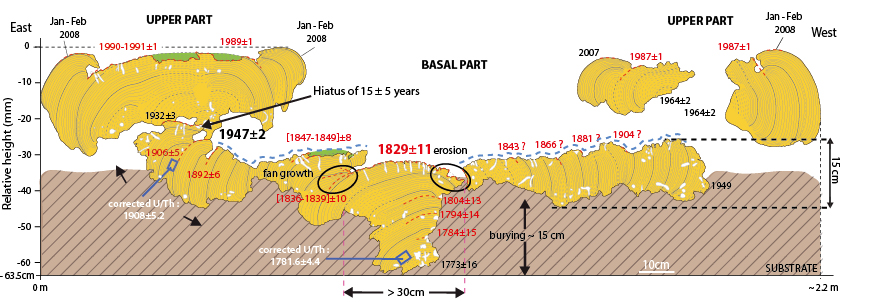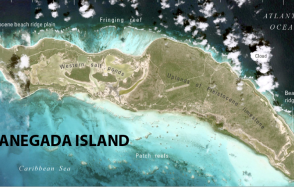A better understanding of climate and the workings of major subduction faults thanks to corals
Coral microatolls are massive corals living in the intertidal zone (area within the tidal range). Already studied in the Pacific and Indian oceans, the microatoll tool has enabled us to advance our understanding of the climate and functioning of major subduction faults.

Panorama of the Belloc microatolls site in Haiti after the earthquake of January 12th, 2010
Publication date: 13/04/2016
Press, Research
Related teams :
Marine Geosciences
Related themes : Earth System Science










